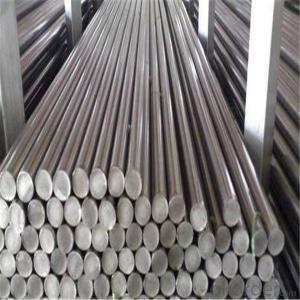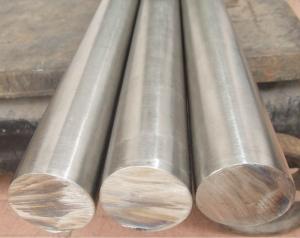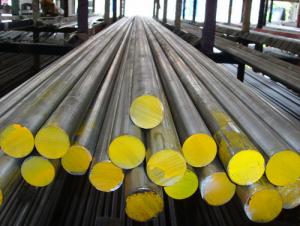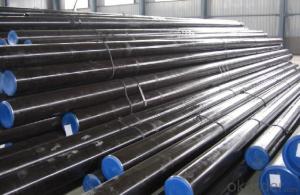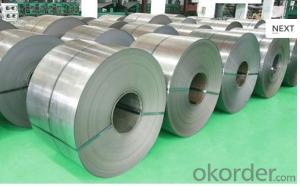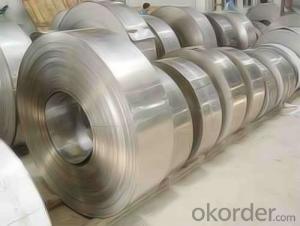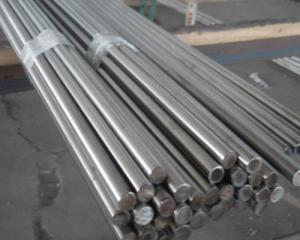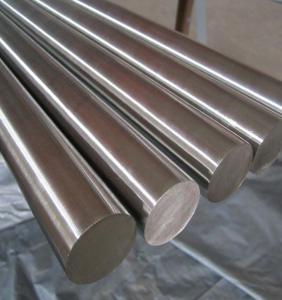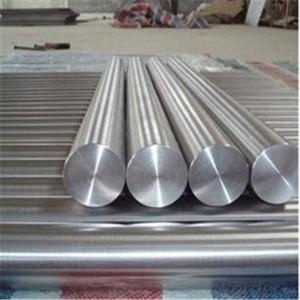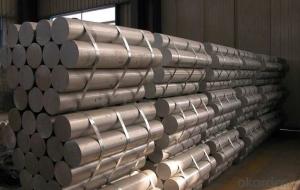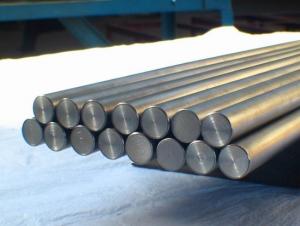Stainless Steel Bar with great price China Manufacturer
- Loading Port:
- Shanghai
- Payment Terms:
- TT OR LC
- Min Order Qty:
- 5 m.t.
- Supply Capability:
- 3500 m.t./month
OKorder Service Pledge
OKorder Financial Service
You Might Also Like
Item specifice
High Quality stainless steel bar with great price
Detailed Information
Name | SAE1045 Carbon Steel Round Bar |
Shape | Round Bar/Square Bar/Flat Bar/Plate/Wire |
Standard | GB/ASTM/SAE/AISI/DIN/JIS/EN/BS |
Surface Treatment: | Black/Peeling/Polished/Machined |
Delivery Condition: | Hot Rolled or Forged/Peeled or Black Surface |
Test | SGS/UT 100% Elements Testing |
Certificate: | ISO/Mill Certificate |
Service: | 24 hours online service / more than 20 years trading and manufacture |
Quality Assurance: | the third party inspection, such as SGS, BV, TUV…etc. is acceptable |
Packaging Details: | standard packing / genuine packing / as per customer's packing instruction |
Product Overviews
Product Name | Typical Grades | Diameter(mm) | Standard Adopted |
Carbon Steel | 20 (1020/S20C/C22) |
Ø16-Ø300 |
GB/SAE/ JIS/DIN |
40 (1040/S40C/C40) | |||
45 (1045/S45C/C45) | |||
Bearing Steel | GCr9 (51100/SUJ1) |
Ø12-Ø250 | |
GCr15 (52100/SUJ2/100Gr6) | |||
GCr9SiMn (A485-Gr.1/SUJ3) | |||
Cr-Mo Steel | 20Cr (5120/SCr420H/20Cr4) |
Ø12-Ø250 | |
40Cr (5140/SCr440/41Cr4) | |||
42CrMo(4140/SCM440/42CrMo4) | |||
Gear Steel | 20CrNiMo |
Ø16-Ø600 | |
20CrMn(5115/SMnC420/20MnCr5) | |||
20CrNiMo(8620/SNCM220/20CrMiMo2) |
Chemical Composition & Properties
Chemical Composition | Mechanical Properties | |||
C | 0.17-0.23 | Tensile strength(MPA) | 930 | |
Si | 0.17-0.37 | Yield strength (MPA) | 735 | |
Mn | 0.90-1.20 | Elongation (δ5/%) | 10 | |
Cr | 0.90-1.20 | Reduction in Area (ψ/%) | 45 | |
Mo | 0.05 | Impact (J) | 47 | |
P | ≤0.030 | Hardness | 187HBW | |
S | ≤0.030 | |||
V | --- | |||
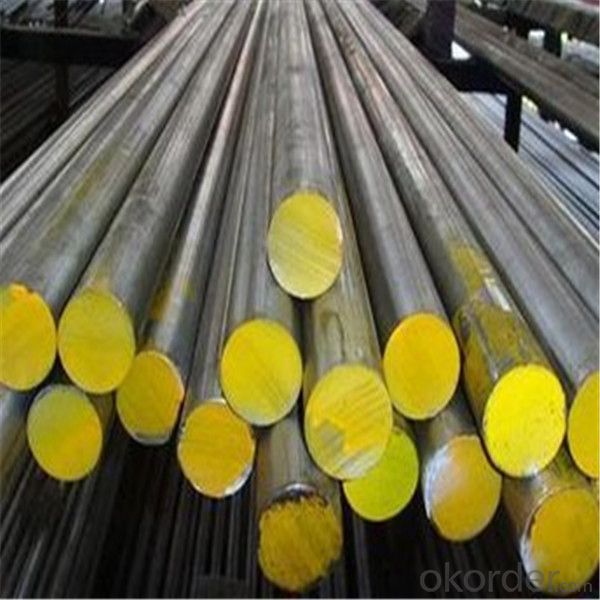

Application
Carbon Steel | l Mold bottom l Plastic mold l Construction machinery parts l Automobile parts l Security grills l Screens l Construction |
Bearing Steel | l Aerospace l Navigation l Nuclear energy l Chemical industry l Electronic information l Petrochemical l Instrument and meter l Transportation |
Cr-Mo Steel | l Mechanism & Fasteners gear l Stressed components for vehicles l Engines and machines l Parts of larger cross-section |
Gear Steel | l All kinds of gears l Statically and dynamically stressed component for vehicles l Engines and machine l Larger cross-section parts l Crankshafts |
After-sale service | l CNBM provides the services and support you need for every step of our cooperation. We’re the business partners you can trust; you can relax and get on with doing business. l For any problem, please kindly contact us at any your convenient time, we’ll reply you in our first priority within 24 hours
|
Advantages
| l Industry experience over 20 years. l Shipment of goods -More than 70 countries worldwide. l The most convenient transport and prompt delivery. l Competitive price with best service. l High technical production line with top quality products. l High reputation based on best quality products.
|
Packaging & Delivery
Packaging Detail | Sea worthy packing /as per customer's packing instruction |
Delivery Detail | 15 ~ 40 days after receiving the deposit |
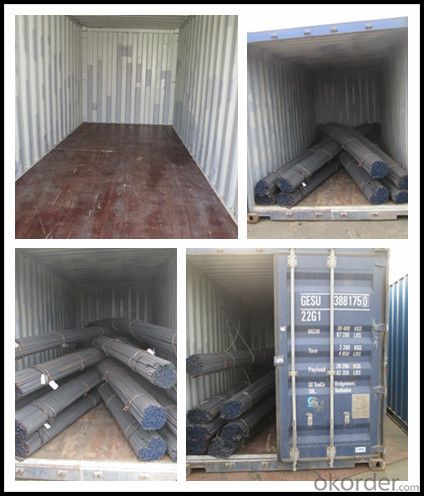
- Q:Can stainless steel bars be used in the manufacturing of distillation columns?
- Yes, stainless steel bars can be used in the manufacturing of distillation columns. Stainless steel is a popular choice of material for distillation columns due to its excellent corrosion resistance and high strength. Distillation columns are used in various industries, including chemical, pharmaceutical, and petroleum, to separate and purify different components of a mixture. The use of stainless steel bars ensures that the distillation column can withstand the harsh conditions and corrosive environments typically encountered in these industries. Additionally, stainless steel bars can be easily formed and welded, allowing for the customization and fabrication of distillation columns to meet specific requirements.
- Q:Can stainless steel bars be used in the chemical aftermarket?
- Yes, stainless steel bars can be used in the chemical aftermarket. Stainless steel is known for its excellent corrosion resistance, making it suitable for use in chemical environments where exposure to corrosive substances is common. Additionally, stainless steel bars are available in various grades, each with its own specific chemical composition and properties, allowing them to be selected based on the specific requirements of the chemical application. This versatility, coupled with the durability and strength of stainless steel, makes it a popular choice for use in the chemical aftermarket.
- Q:Can stainless steel bars be anodized in different colors?
- No, stainless steel bars cannot be anodized in different colors. Anodizing is a process typically used on aluminum to create a protective oxide layer that can be dyed to produce various colors. Stainless steel does not form the same type of oxide layer, so anodizing is not suitable for achieving different colors on stainless steel bars.
- Q:Are stainless steel bars suitable for machining operations?
- Stainless steel bars are commonly used for machining operations. They have excellent machinability, which means they can be easily shaped and formed using different techniques like cutting, drilling, milling, and turning. This is because of their composition, which includes iron, chromium, nickel, and other alloying elements that enhance their mechanical properties and make them more resistant to wear and corrosion. However, it's important to note that the specific grade of stainless steel being used can affect its machinability. Some grades, such as 303 and 416, are specifically designed to be easier to machine, whereas others like 304 and 316 may require more specialized techniques. Furthermore, the machining process itself, including factors like tool selection, cutting speeds, and feeds, can also impact the overall machinability of stainless steel bars. Therefore, it is recommended to consult with a machining expert or refer to the manufacturer's guidelines to ensure the proper machining operations are used for stainless steel bars.
- Q:Can stainless steel bars be used in the manufacturing industry?
- Yes, stainless steel bars can be used in the manufacturing industry. Stainless steel is a versatile material known for its strength, durability, and corrosion resistance. These properties make it ideal for various applications in the manufacturing industry, such as machinery, equipment, and structural components. Stainless steel bars can be used to fabricate parts, frames, supports, and other components that require high strength and resistance to harsh environments. Additionally, stainless steel bars can be easily machined, welded, and formed, allowing for customization and flexibility in manufacturing processes. Overall, stainless steel bars are widely used in the manufacturing industry due to their exceptional properties and versatility.
- Q:How do you measure the diameter of a stainless steel bar?
- To measure the diameter of a stainless steel bar, you can use a caliper or a micrometer. First, ensure that the bar is clean and free from any debris or dirt. Then, open the caliper or micrometer to its widest setting and place the stainless steel bar between the jaws of the instrument. Gently close the jaws until they are snugly fit around the bar, making sure not to apply too much pressure that may deform the bar. Take note of the measurement displayed on the scale or digital display of the caliper or micrometer. For accurate results, it is recommended to take multiple measurements at different points along the length of the bar and calculate the average diameter. This helps to account for any irregularities or imperfections in the bar's shape. Remember to record the units of measurement used, whether it is in millimeters (mm), inches (in), or any other appropriate unit, to ensure clarity and consistency in your measurements.
- Q:What steelmaking furnace for stainless steel bars?
- At present, most with two kinds of stainless steel smelting furnace, a furnace is another electroslag furnace, intermediate frequency furnace is mainly used for less demanding occasions do not yield, while electroslag furnace materials used in the occasions with higher requirements.
- Q:Can stainless steel bars be used in nuclear applications?
- Yes, stainless steel bars can be used in nuclear applications. Stainless steel has excellent corrosion resistance, high strength, and good mechanical properties, making it suitable for various components in nuclear reactors, such as fuel rods, steam generators, and containment vessels. Additionally, stainless steel has low neutron absorption, which is crucial for maintaining the stability and safety of nuclear systems.
- Q:What are the different tolerance levels for stainless steel bars?
- Stainless steel bars have varying tolerance levels, which are determined by the specific grade and intended use of the material. Tolerance refers to the allowable deviation or variation in the dimensions or properties of the stainless steel bar. Different tolerance levels are established to ensure that the bars meet the required specifications and performance standards. Tolerance levels for stainless steel bars can be categorized into several aspects such as dimensional tolerances, straightness tolerances, surface finish tolerances, and mechanical property tolerances. 1. Dimensional Tolerances: These tolerances determine the permissible deviation in the dimensions of the stainless steel bar, including diameter, length, width, and thickness. The specific tolerance values can vary depending on the grade and size of the bar. For example, a common tolerance for stainless steel round bars is ±0.005 inches for diameter and ±0.010 inches for length. 2. Straightness Tolerances: Straightness refers to the extent to which a stainless steel bar deviates from a perfectly straight line. Straightness tolerances specify the permissible amount of deviation in terms of bow, sweep, or camber. These tolerances ensure the bars are suitable for applications that require precise alignment and fitment. 3. Surface Finish Tolerances: Surface finish refers to the smoothness and appearance of the stainless steel bar's surface. Tolerance levels for surface finish are usually defined in terms of roughness average (Ra) or surface roughness. Different applications may require different surface finishes, and the tolerances ensure that the bars meet the specified requirements. 4. Mechanical Property Tolerances: Stainless steel bars are often subject to mechanical property testing to ensure they meet the desired strength, hardness, and other mechanical characteristics. Tolerance levels for mechanical properties are defined based on the specific grade and application requirements, ensuring that the bars possess the desired strength and performance. In summary, the tolerance levels for stainless steel bars vary depending on the specific grade and application. These tolerance levels encompass dimensional tolerances, straightness tolerances, surface finish tolerances, and mechanical property tolerances. Adhering to these tolerance levels is crucial to ensure the bars meet the required specifications and perform optimally in their intended applications.
- Q:What are the different types of corrosion testing for stainless steel bars?
- There are several different types of corrosion testing methods that can be used to evaluate the corrosion resistance of stainless steel bars. Some of the most common types of corrosion testing include: 1. Salt Spray Test: This test involves exposing the stainless steel bars to a salt spray environment for a certain period of time. The bars are then inspected for signs of corrosion, such as rust or pitting. 2. Immersion Test: In this test, the stainless steel bars are immersed in a corrosive liquid, such as an acid or a salt solution, for a specific duration. The bars are then examined for any signs of corrosion. 3. Electrochemical Testing: This method involves using electrochemical techniques, such as polarization resistance or electrochemical impedance spectroscopy, to determine the corrosion rate and behavior of the stainless steel bars. It provides more detailed information about the corrosion process. 4. Crevice Corrosion Test: This test focuses on evaluating the susceptibility of stainless steel bars to crevice corrosion, which occurs in tight spaces or gaps. It involves creating a crevice between the bar and another material and exposing it to a corrosive environment. 5. Intergranular Corrosion Test: This test is performed to assess the susceptibility of stainless steel bars to intergranular corrosion, which can occur due to sensitization during welding or heat treatment. It typically involves subjecting the bars to a specific chemical solution or heat treatment and examining them for signs of intergranular corrosion. 6. Pitting Resistance Test: Pitting corrosion is a common form of corrosion in stainless steel. This test is designed to determine the resistance of stainless steel bars to pitting corrosion by subjecting them to a corrosive environment and evaluating the extent of pitting. These different types of corrosion testing methods help manufacturers and users of stainless steel bars to assess their corrosion resistance and choose the most suitable material for their specific applications.
1. Manufacturer Overview |
|
|---|---|
| Location | |
| Year Established | |
| Annual Output Value | |
| Main Markets | |
| Company Certifications | |
2. Manufacturer Certificates |
|
|---|---|
| a) Certification Name | |
| Range | |
| Reference | |
| Validity Period | |
3. Manufacturer Capability |
|
|---|---|
| a)Trade Capacity | |
| Nearest Port | |
| Export Percentage | |
| No.of Employees in Trade Department | |
| Language Spoken: | |
| b)Factory Information | |
| Factory Size: | |
| No. of Production Lines | |
| Contract Manufacturing | |
| Product Price Range | |
Send your message to us
Stainless Steel Bar with great price China Manufacturer
- Loading Port:
- Shanghai
- Payment Terms:
- TT OR LC
- Min Order Qty:
- 5 m.t.
- Supply Capability:
- 3500 m.t./month
OKorder Service Pledge
OKorder Financial Service
Similar products
New products
Hot products
Hot Searches
Related keywords
